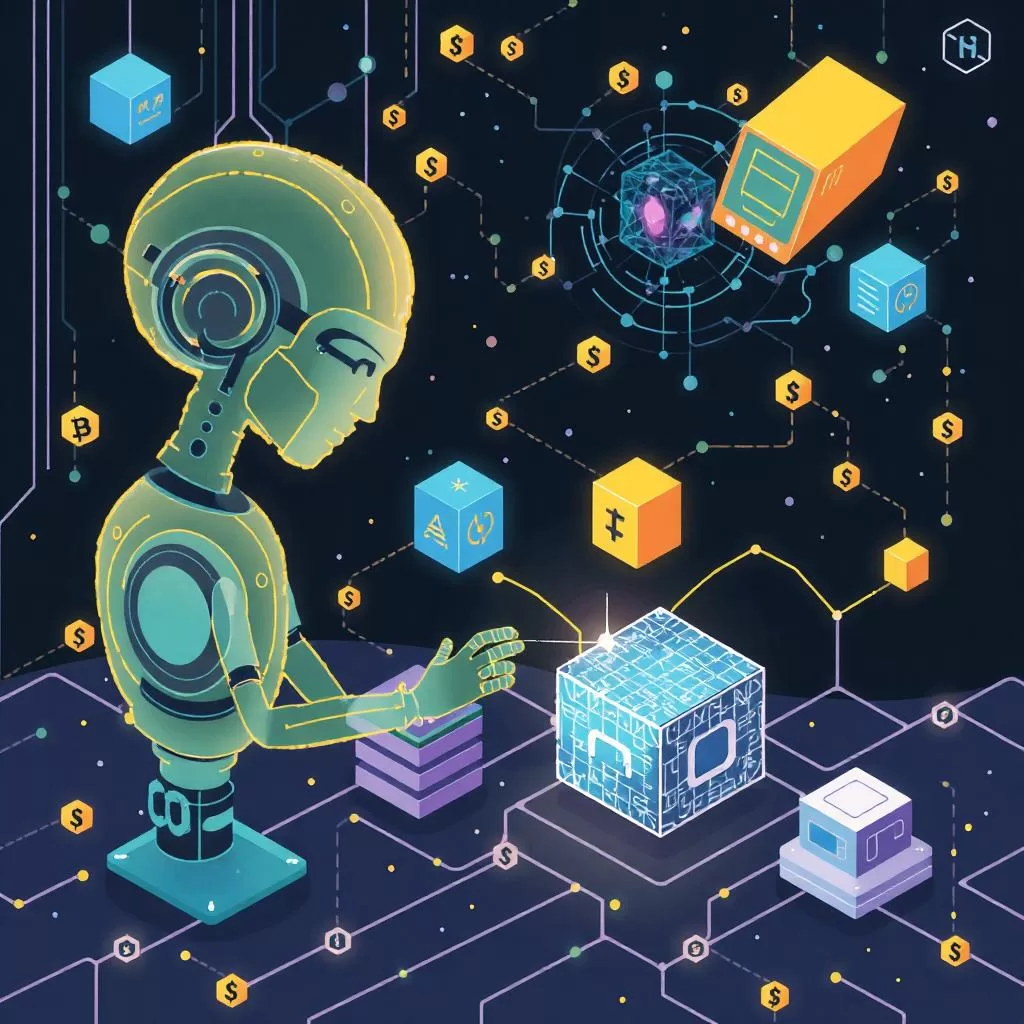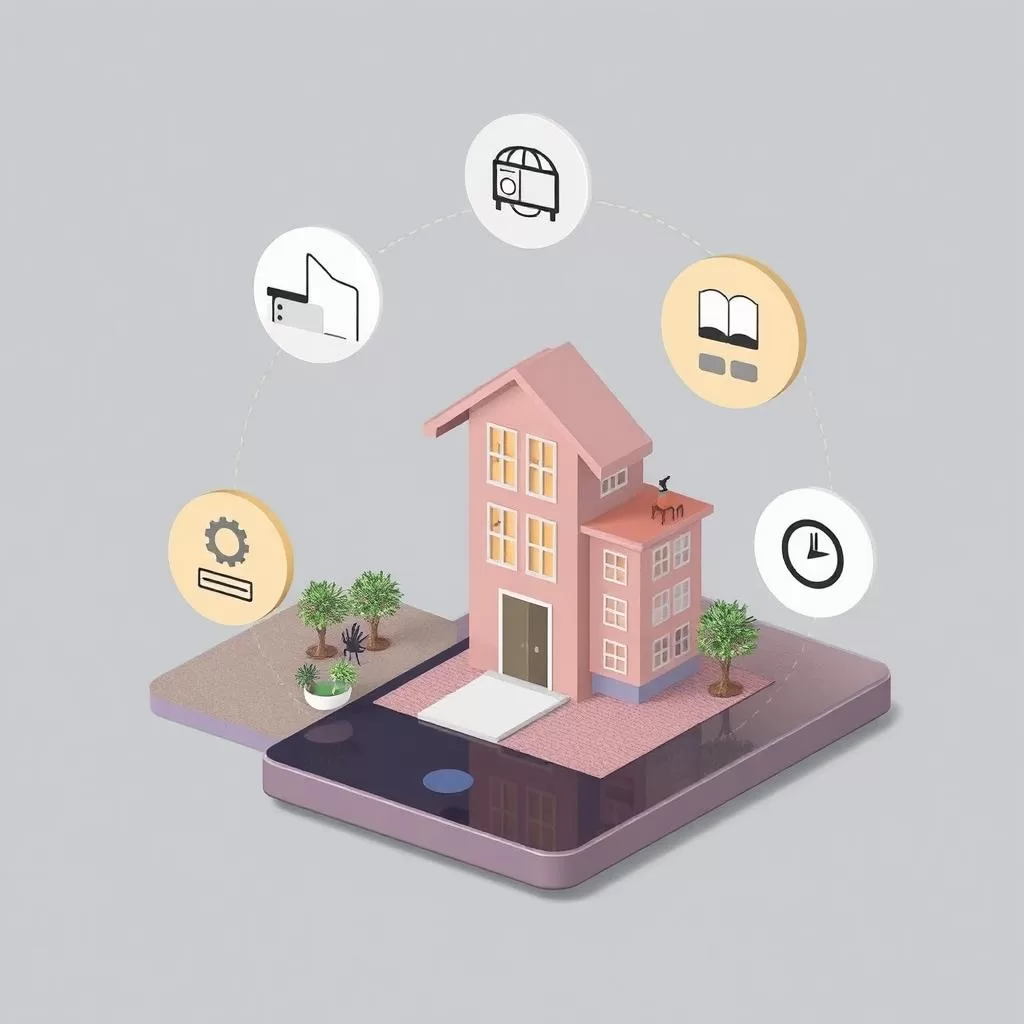AI and Blockchain in Fintech: A Transformation in Payments
The fintech industry is undergoing a revolution, driven by Artificial Intelligence (AI), Blockchain, and digital payment innovations. With global transactions shifting to cashless systems, fintech companies are developing faster, more secure, and decentralized payment solutions.
By 2030, experts predict that AI-powered financial automation, decentralized finance (DeFi), and biometric payments will dominate global transactions.
What You’ll Learn in This Article:
- How AI and blockchain are reshaping digital payments
- The rise of Decentralized Finance (DeFi) and Central Bank Digital Currencies (CBDCs)
- Future trends in fintech security and transaction automation
The Role of AI and Blockchain in Fintech and Digital Payments
AI is transforming financial services by automating transactions, detecting fraud, and personalizing banking experiences.
How AI is Used in Fintech:
Fraud Detection & Prevention
AI-powered systems now play a crucial role in detecting and preventing fraud. By analyzing transactions in real time, AI can quickly identify suspicious activity or unusual spending patterns. As a result, these systems can flag potential threats before they escalate, ensuring a more secure financial environment for both consumers and businesses.
AI Chatbots & Virtual Assistants
Moreover, AI chatbots are transforming customer service in the banking sector. For instance, banks like Bank of America use Erica, and Capital One utilizes Eno, both of which provide 24/7 customer support. In addition, these virtual assistants can handle a variety of tasks, from answering queries to helping customers manage their finances. This shift not only improves efficiency but also enhances the overall customer experience.
Automated Trading & Robo-Advisors
Furthermore, AI is making waves in investment platforms. With AI-driven automated trading systems, investors can access personalized financial advice based on their unique preferences and goals. Additionally, robo-advisors use AI algorithms to create and manage portfolios, helping users optimize their investments with minimal human intervention. Ultimately, this technology enables smarter, more efficient financial decision-making for all levels of investors.
💡 For example, PayPal and Stripe use AI to analyze transactions in milliseconds, preventing fraudulent payments.
🔗 Related: The Role of AI in Mobile App Development
AI and Blockchain: The Backbone of Secure Digital Transactions in Fintech
Blockchain technology ensures secure, transparent, and tamper-proof transactions, making it a critical component of modern fintech solutions.
Benefits of Blockchain in Fintech:
Decentralization
One of the key advantages of blockchain is its decentralized nature. Unlike traditional financial systems, there is no central authority that controls blockchain transactions. This eliminates the risk of a single point of failure, making it more resistant to fraud and manipulation. As a result, blockchain technology provides a higher level of trust and security for transactions.
Smart Contracts
Another transformative feature of blockchain is smart contracts. These self-executing contracts automatically execute predefined agreements without the need for intermediaries. For example, blockchain platforms can facilitate payments or transfers based on certain conditions being met. By removing middlemen, smart contracts significantly lower transaction costs and increase efficiency.
Immutable Transactions
Additionally, blockchain ensures that once transactions are recorded, they cannot be altered or tampered with. This immutability is vital for maintaining the integrity of data, as it makes it nearly impossible for hackers to manipulate records after they have been confirmed. As a result, blockchain provides an unprecedented level of security for digital transactions.
💡 For example, Visa and Mastercard are integrating blockchain technology for cross-border transactions, reducing settlement times from days to seconds.
The Rise of Decentralized Finance (DeFi)
DeFi is transforming traditional banking by offering peer-to-peer financial services without intermediaries.
Key Features of DeFi:
Lending & Borrowing
One of the core features of DeFi is lending and borrowing. Through decentralized platforms, users can lend and borrow cryptocurrencies without relying on traditional banks or financial institutions. This process is powered by smart contracts, which automatically facilitate transactions and agreements between lenders and borrowers, creating a more efficient and transparent system.
Decentralized Exchanges (DEXs)
Another key feature of DeFi is the emergence of decentralized exchanges (DEXs). Platforms like Uniswap allow users to trade cryptocurrencies directly with one another, without intermediaries. This peer-to-peer model gives individuals greater control over their assets and ensures that transactions are processed quickly and securely, while also reducing trading fees compared to centralized exchanges.
Yield Farming & Staking
DeFi also enables users to earn passive income through yield farming and staking. By locking up their crypto assets in smart contracts, users can earn rewards in the form of interest, liquidity incentives, or governance tokens. This mechanism creates new income opportunities for individuals and allows them to make their crypto assets work for them, providing an alternative to traditional savings accounts or investment strategies.
💡 For example, the DeFi market reached $150 billion in total value locked (TVL) in 2024, proving its growing adoption.
Biometric & Contactless Payments: The Future of Transactions
With the rise of biometric authentication, payments are becoming more secure and convenient.
Future Payment Innovations:
As technology continues to evolve, the way we handle financial transactions is undergoing a major transformation. Here are some of the most promising innovations redefining the future of payments:
✅ Facial Recognition & Fingerprint Payments
To begin with, biometric authentication methods such as facial recognition and fingerprint scanning are making payments faster and more secure. Popular platforms like Apple Pay, Google Pay, and Samsung Pay have already integrated these technologies to reduce fraud and improve user experience. Instead of swiping a card or entering a PIN, users can now authenticate payments with just a glance or a touch.
✅ Voice-Activated Transactions
Moreover, the rise of AI-powered voice assistants is opening new doors in the realm of payments. With platforms like Amazon Alexa and Google Assistant, consumers can now authorize and complete purchases using only their voice. This not only enhances accessibility but also adds convenience for multitasking and hands-free situations—especially useful in smart homes and while driving.
✅ Wearable Payment Devices
In addition, wearable tech is taking contactless payments to the next level. Smartwatches, fitness trackers, and even payment-enabled rings embedded with NFC (Near Field Communication) chips allow users to make tap-to-pay purchases effortlessly.
💡 For example, Amazon is testing palm-scanning payment technology, allowing customers to pay with their hands.
🔗 Related: Top 10 Emerging Technologies in 2025
Central Bank Digital Currencies (CBDCs) vs. Cryptocurrencies
Governments worldwide are exploring CBDCs, which are government-issued digital currencies built on blockchain.
CBDCs vs. Cryptocurrencies:
As digital finance continues to reshape the global economy, two terms often come up in conversations—Central Bank Digital Currencies (CBDCs) and Cryptocurrencies. While both exist in the digital realm, they serve vastly different purposes and are built on contrasting principles. Let’s break down their key differences:
✅ CBDCs – Government-Issued and Centralized
To start, CBDCs are digital versions of a country’s fiat currency, issued and regulated by a central bank. Unlike cryptocurrencies, these are centralized and operate under strict governmental control. A leading example is China’s Digital Yuan, which aims to offer a state-backed alternative to private digital payment systems.
CBDCs are designed to enhance transparency, reduce the cost of cash handling, and improve financial inclusion, especially in regions where banking access is limited. Governments also see them as a tool to modernize monetary systems while retaining authority over financial flows.
✅ Cryptocurrencies – Decentralized and Borderless
In contrast, cryptocurrencies like Bitcoin and Ethereum are built on decentralized blockchain networks. They are not issued by any central authority, making them resistant to government interference or manipulation. Instead, these digital assets are maintained by a network of computers (or nodes) and rely on cryptographic principles for security and consensus.
Crypto appeals to those seeking financial autonomy, borderless transactions, and alternatives to traditional banking systems. It empowers users to be their own bank, enabling peer-to-peer transfers without intermediaries.
✅ Key Philosophies and Use Cases
Although both CBDCs and cryptocurrencies aim to digitize money, they stem from very different philosophies. CBDCs emphasize regulatory oversight, economic stability, and state control. Cryptocurrencies, on the other hand, prioritize privacy, freedom from censorship, and decentralized governance.
Moreover, while CBDCs are expected to be integrated into existing financial systems, cryptocurrencies often challenge those systems entirely by creating new financial ecosystems.
💡 For example, the European Central Bank (ECB) is developing the Digital Euro to compete with cryptocurrencies.
AI and Blockchain – Powered Fraud Detection & Cybersecurity in Fintech
With the rise of digital payments, fintech companies must enhance security to prevent fraud.
How AI Strengthens Cybersecurity:
As cyber threats become more advanced, Artificial Intelligence (AI) is playing a crucial role in defending digital systems. By analyzing vast amounts of data at lightning speed, AI helps organizations stay ahead of hackers and fraudsters. Here’s how it’s making cybersecurity smarter and stronger:
✅ Real-Time Fraud Monitoring
AI-powered systems can analyze transactions in real time, detecting unusual patterns that may signal fraud. This proactive approach allows organizations to identify and block suspicious activity before it causes damage, greatly reducing financial risk.
✅ Behavioral Biometrics
Beyond passwords and pins, AI uses behavioral biometrics to understand how users interact with systems—like typing speed, mouse movements, or how they swipe a screen. When unusual behavior is detected, the system can immediately flag or block access, adding a subtle yet powerful layer of security.
✅ Quantum Cryptography (Emerging Technology)
Looking ahead, AI is expected to complement quantum cryptography—a cutting-edge approach to securing data using principles of quantum mechanics. This technology could revolutionize how we encrypt sensitive information, especially in sectors like finance and healthcare.
💡 For example, Stripe’s AI-driven fraud detection system blocks billions of fraudulent transactions every year.
🔗 Related: The Future of AI in Cybersecurity
The Future of Fintech in E-Commerce & Retail
E-commerce platforms are integrating AI, blockchain, and digital wallets for seamless shopping experiences.
Fintech Innovations in E-Commerce:
The e-commerce landscape is evolving rapidly, thanks to the rise of financial technologies (fintech) that are reshaping the way consumers browse, pay, and interact with online retailers. Here are some of the most exciting fintech innovations currently driving this transformation:
✅ One-Click AI-Powered Checkout
Speed and security are now top priorities in online shopping. With AI-powered one-click checkouts, customers can complete purchases in seconds, while advanced fraud detection algorithms work silently in the background. This not only improves the user experience but also protects merchants from fraudulent transactions, reducing cart abandonment rates significantly.
✅ Crypto Payments in Online Stores
More e-commerce platforms are now embracing cryptocurrency payments, giving customers the option to pay with popular digital currencies like Bitcoin and Ethereum. This trend offers greater payment flexibility, especially for international shoppers, and reflects a growing consumer interest in decentralized finance (DeFi).
✅ Buy Now, Pay Later (BNPL) Services
Fintech startups such as Klarna, Affirm, and Afterpay are making it easier than ever for consumers to split purchases into interest-free installments. This Buy Now, Pay Later (BNPL) model is especially popular among younger shoppers and has become a powerful sales driver for online stores looking to reduce financial friction at checkout.
💡 For example, Shopify now supports crypto payments, allowing merchants to accept Bitcoin, Ethereum, and stablecoins.
The Role of Big Data in Personalized Finance
Fintech companies use big data analytics to provide personalized banking experiences.
How Big Data Enhances Fintech:
In the fast-evolving world of fintech, big data is a game-changer. By analyzing massive volumes of user data in real time, fintech companies are able to deliver more personalized, accurate, and efficient financial solutions. Here’s how big data is driving meaningful improvements across the financial technology sector:
✅ Credit Scoring with AI
Traditional credit scores often rely on limited financial history. Now, with big data and AI, fintech platforms can analyze detailed spending behaviors, income patterns, and even online activity to create a more complete picture of creditworthiness. This results in fairer and faster lending decisions, especially for underbanked populations.
✅ AI-Driven Investment Portfolios
Big data also fuels the rise of robo-advisors, which use AI to assess a user’s financial goals, risk tolerance, and market trends. These platforms can then recommend tailored investment portfolios that adjust in real-time based on shifting data. It’s an efficient way for users to invest without needing a traditional financial advisor.
✅ Personalized Budgeting Apps
Fintech apps like Mint, YNAB (You Need A Budget), and PocketGuard harness big data to help users track their expenses and plan better. By categorizing transactions and identifying spending trends, these tools offer personalized financial insights that make budgeting easier and more effective.
💡For example, JP Morgan Chase uses AI-powered big data to predict customer financial needs.
Smart Cities & Cashless Societies
The cashless revolution is driving smart cities to adopt fintech innovations.
How Fintech Powers Smart Cities:
✔ Digital ID payments – Facial recognition-based payments for public services.
✔ Blockchain-powered land registries – Reduces fraud in real estate transactions.
✔ AI-driven transportation payments – Smart transit systems use fintech for automated fare collection.
💡 Example: Sweden is set to become a cashless society by 2030, relying entirely on digital transactions.
The Future of Fintech: What to Expect by 2030
🚀 AI-driven financial automation will replace manual banking tasks.
🚀 Crypto-backed mortgages & loans will become mainstream.
🚀 Metaverse banking – Virtual banks will offer financial services in digital worlds.
🚀 Global DeFi adoption – More individuals will use DeFi platforms instead of traditional banks.
💡 Example: Banks like HSBC and JPMorgan are already exploring metaverse banking in virtual worlds like Decentraland.
Conclusion: AI and Blockchain in Fintech is the Future of Global Transactions
The fintech industry is evolving faster than ever, with AI, blockchain, and DeFi shaping the future of digital payments.
Key Takeaways:
✅ AI improves fraud detection, automated banking, and investment strategies.
✅ Blockchain ensures secure, decentralized, and transparent transactions.
✅ DeFi is disrupting traditional finance with peer-to-peer financial services.
💬 What fintech trends are you most excited about? Share your thoughts in the comments!
Share this content:







Post Comment